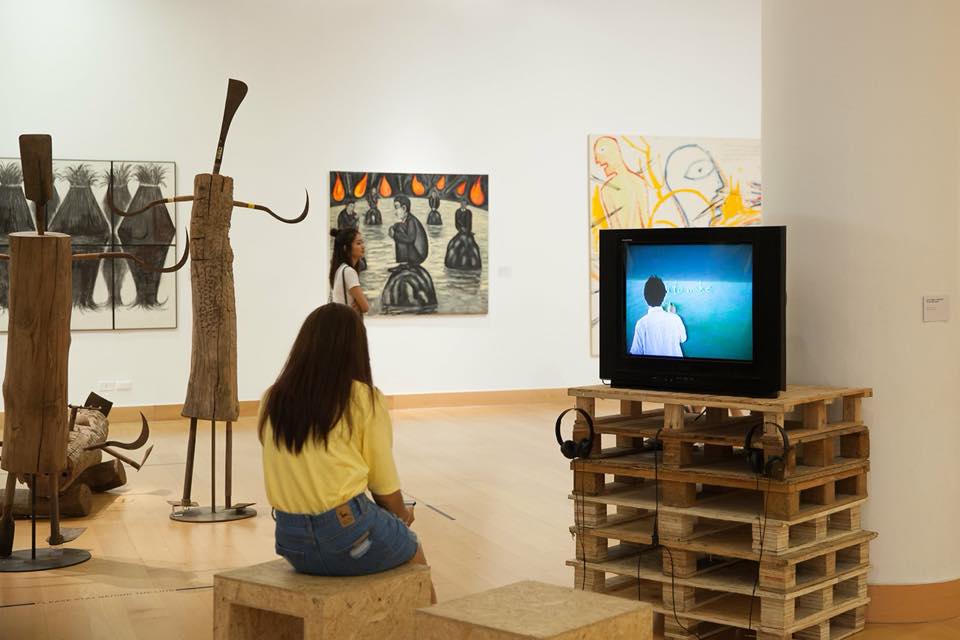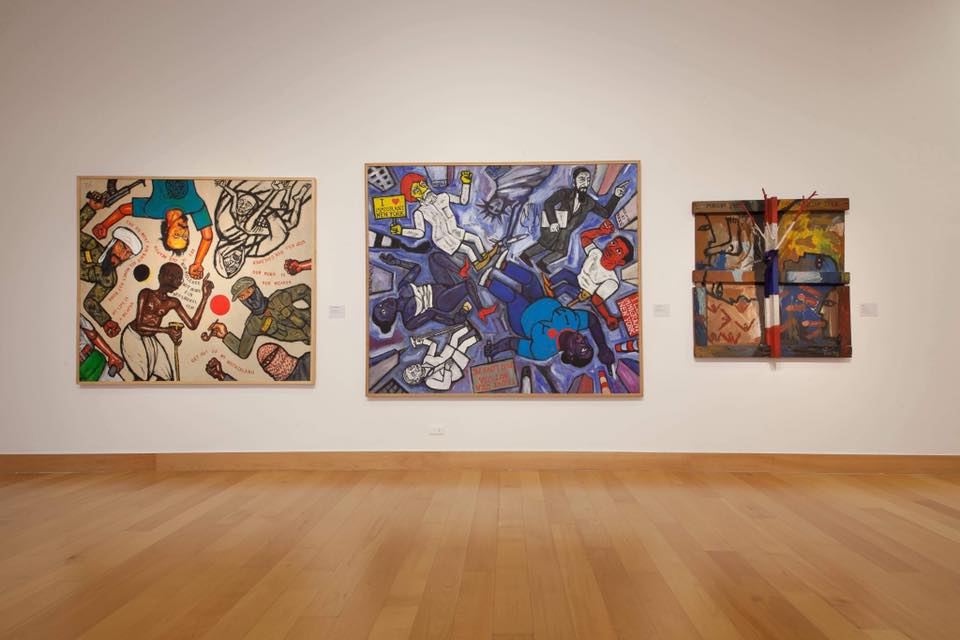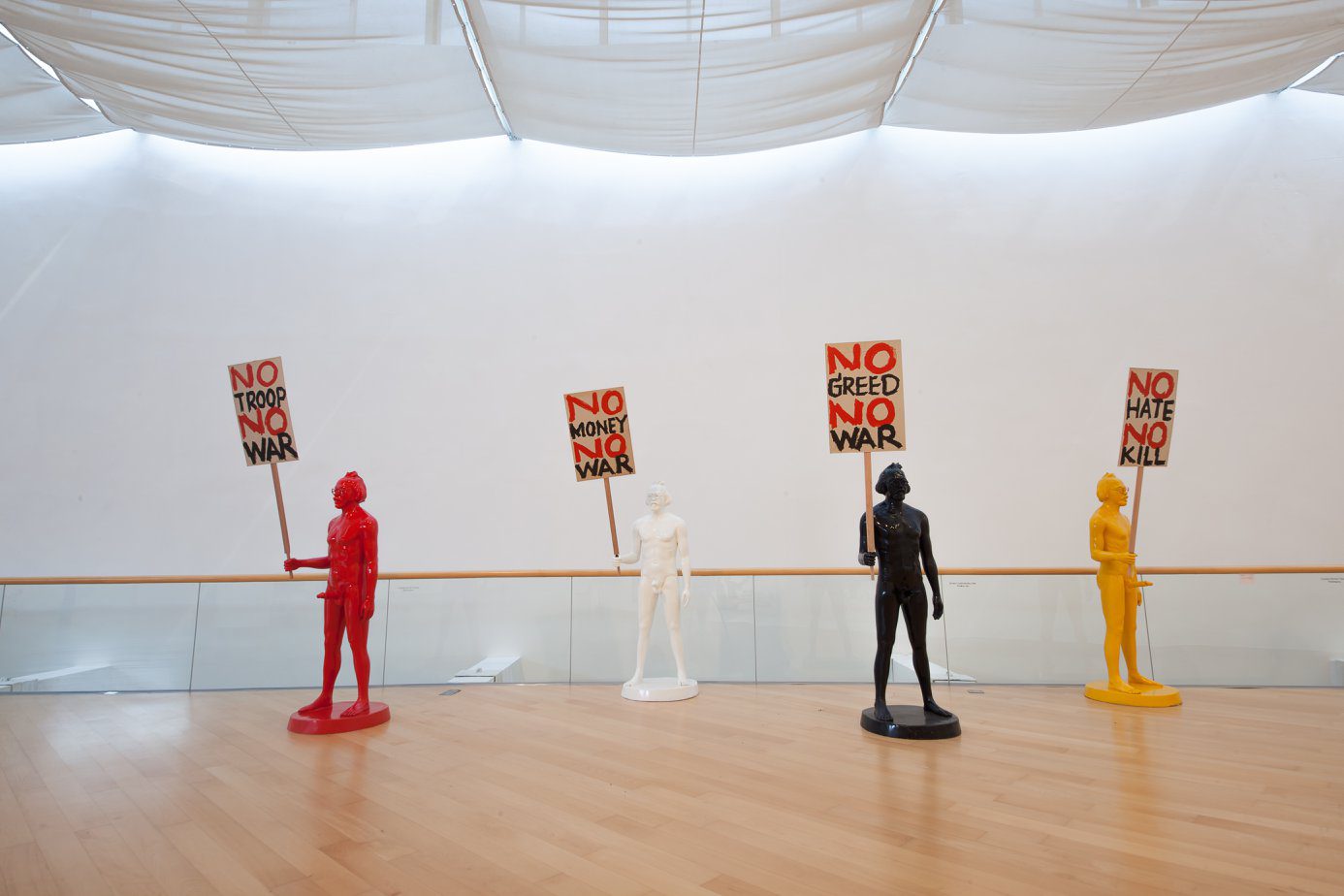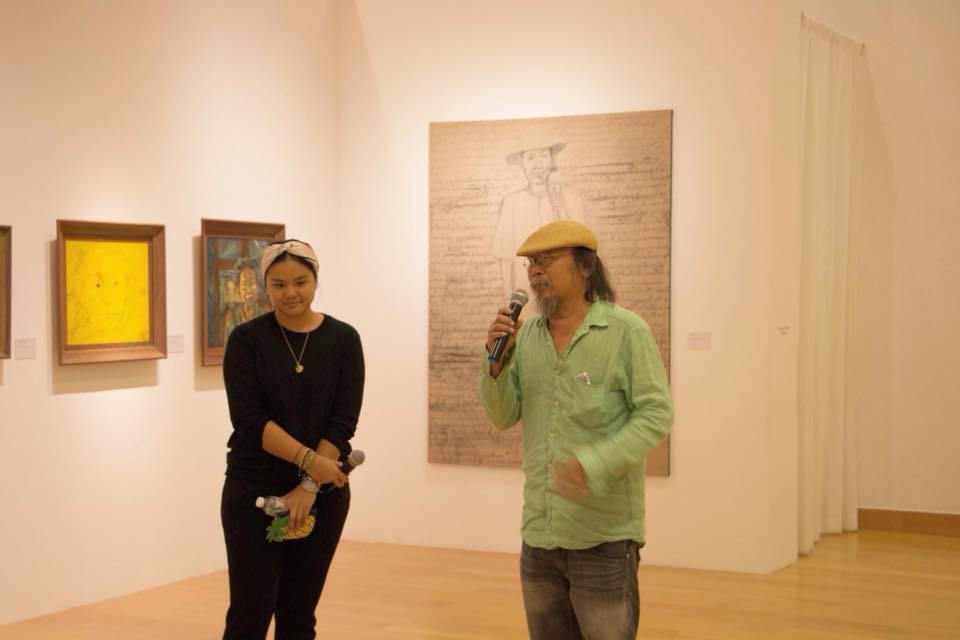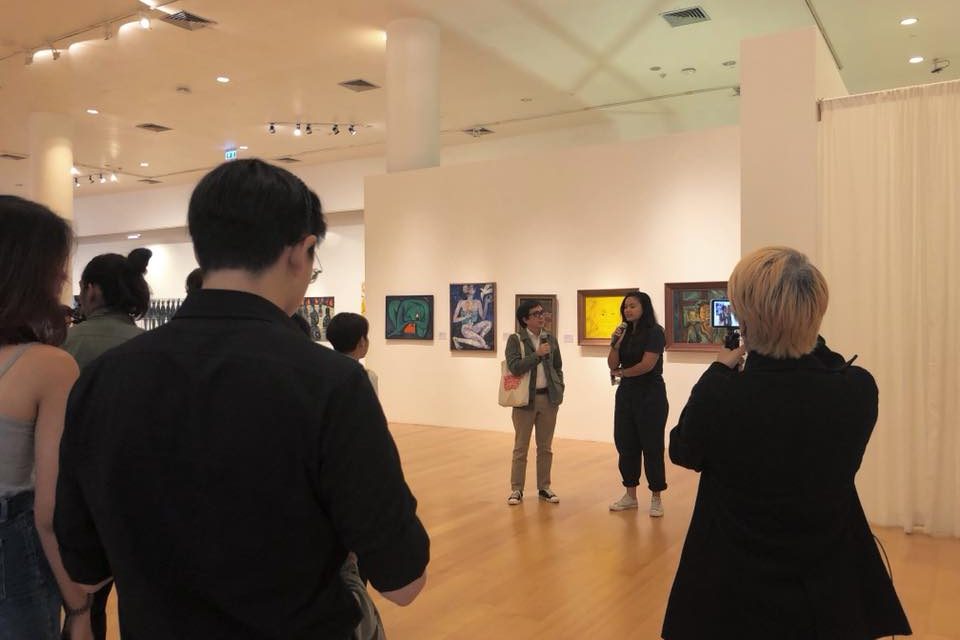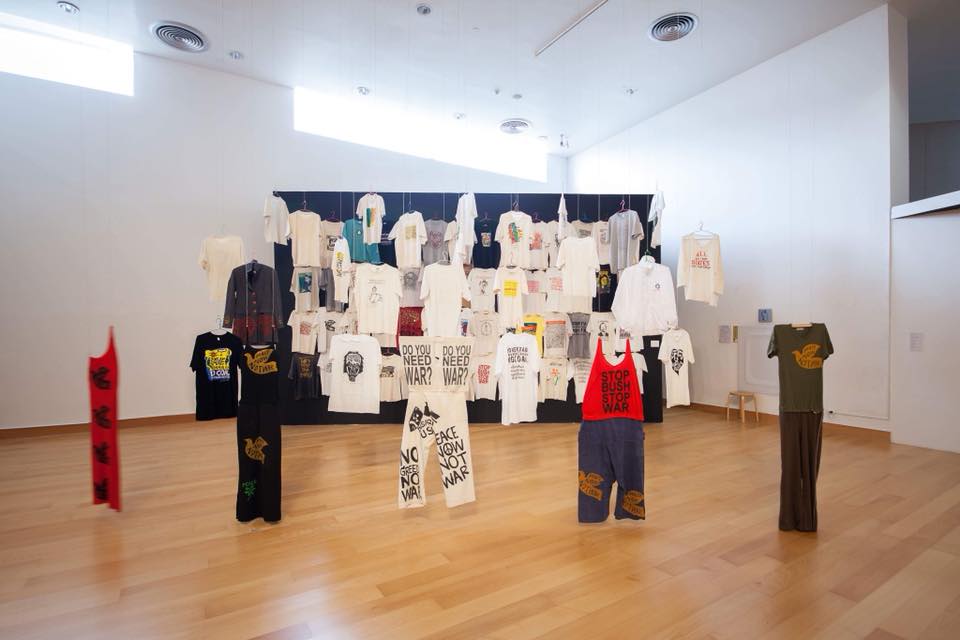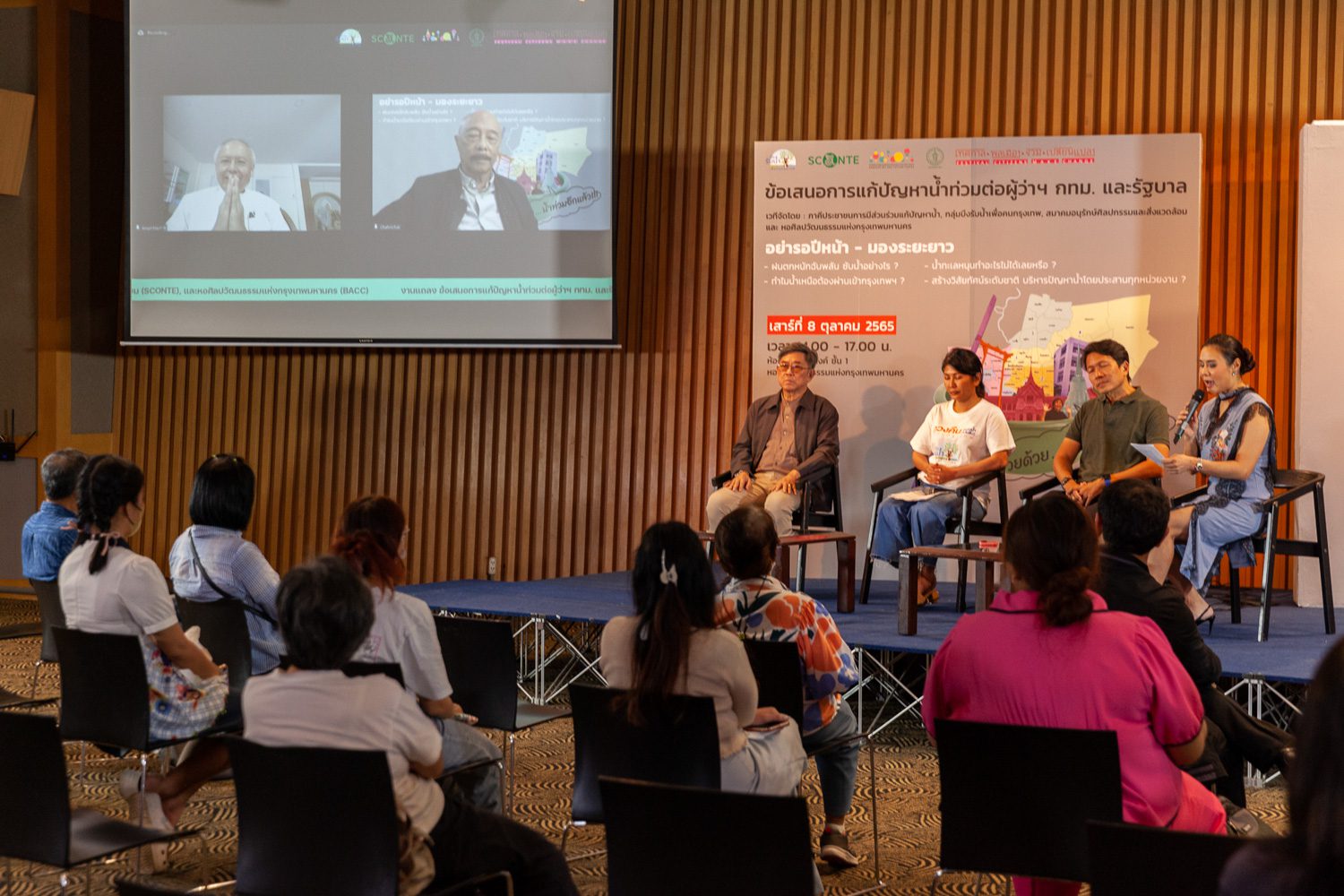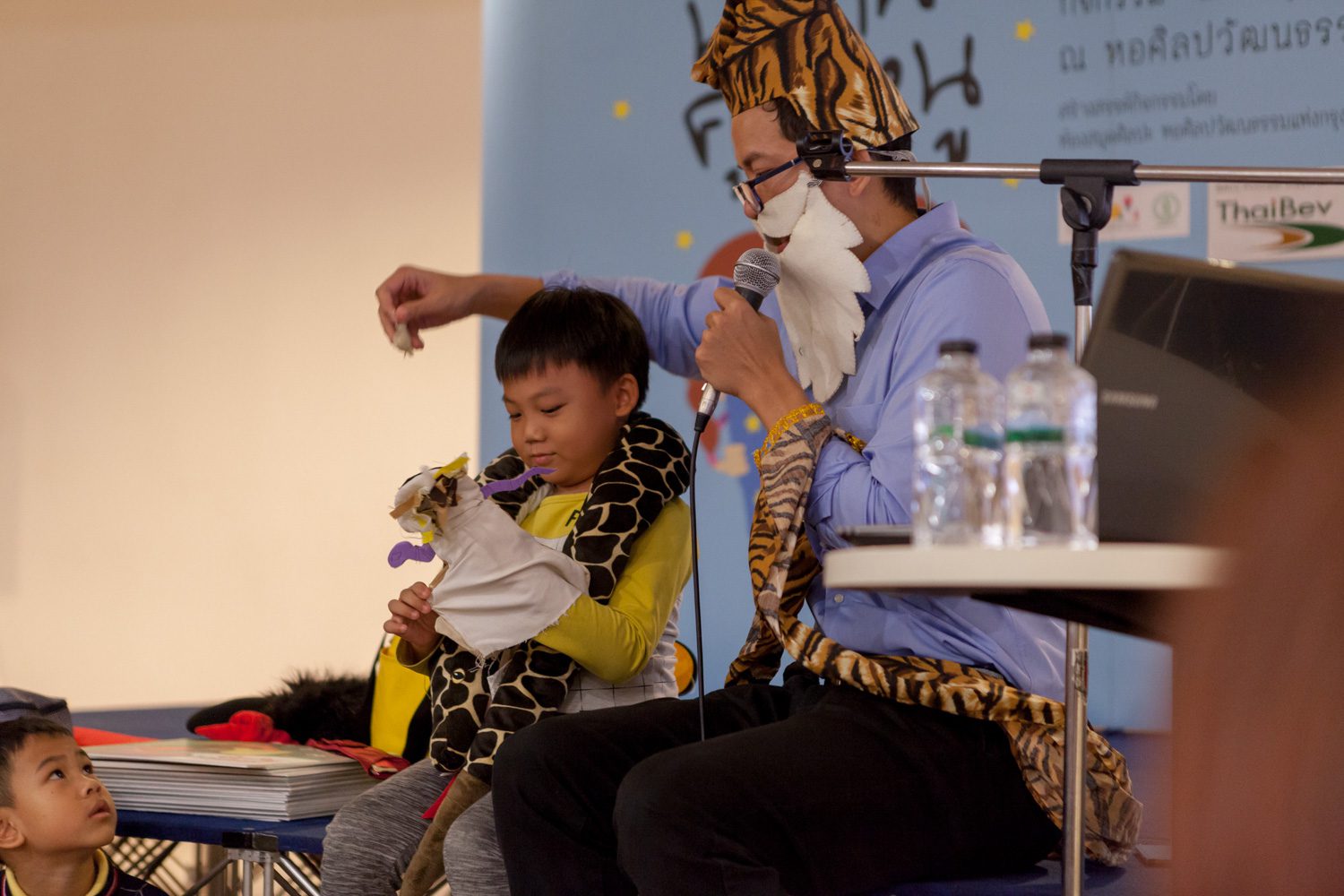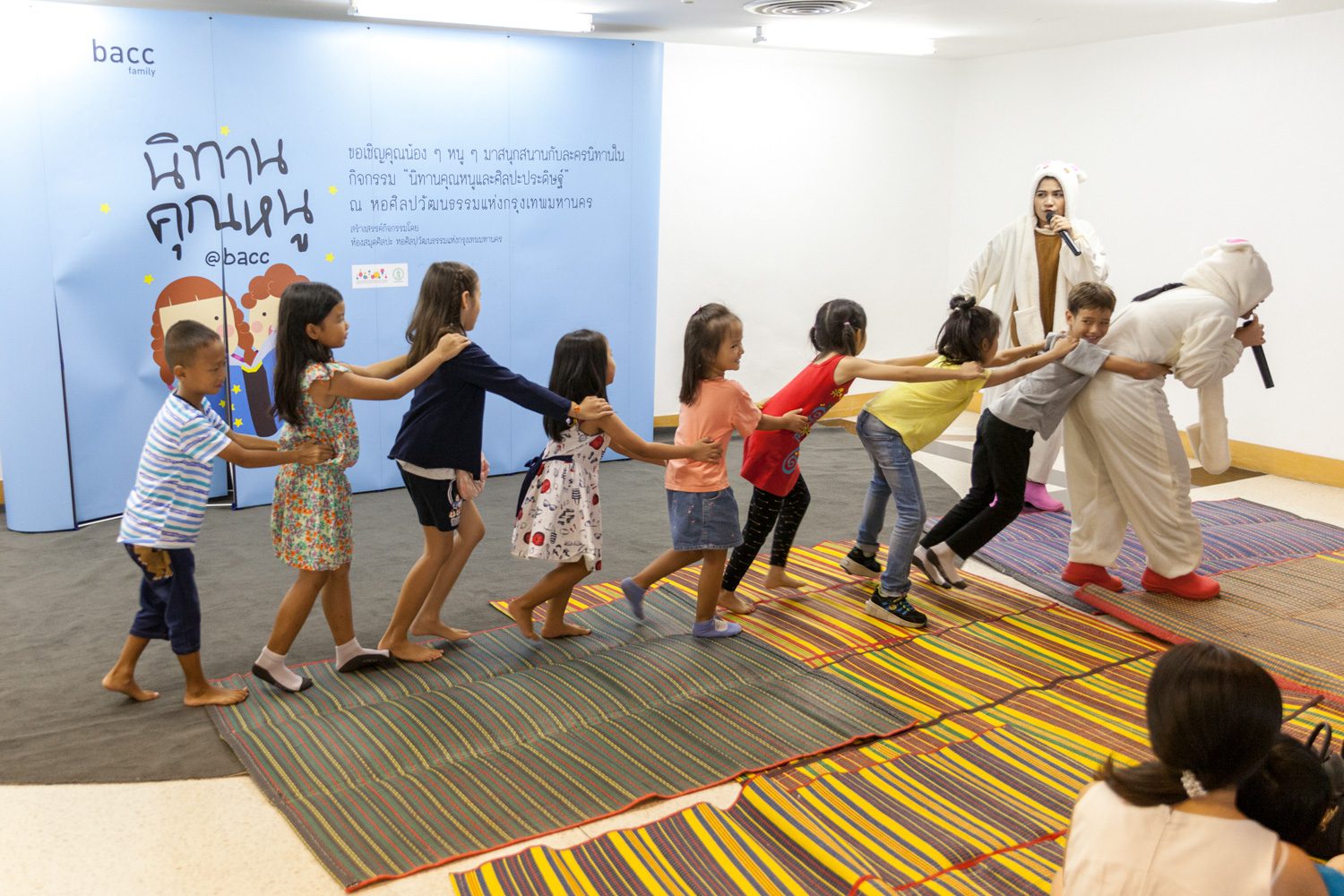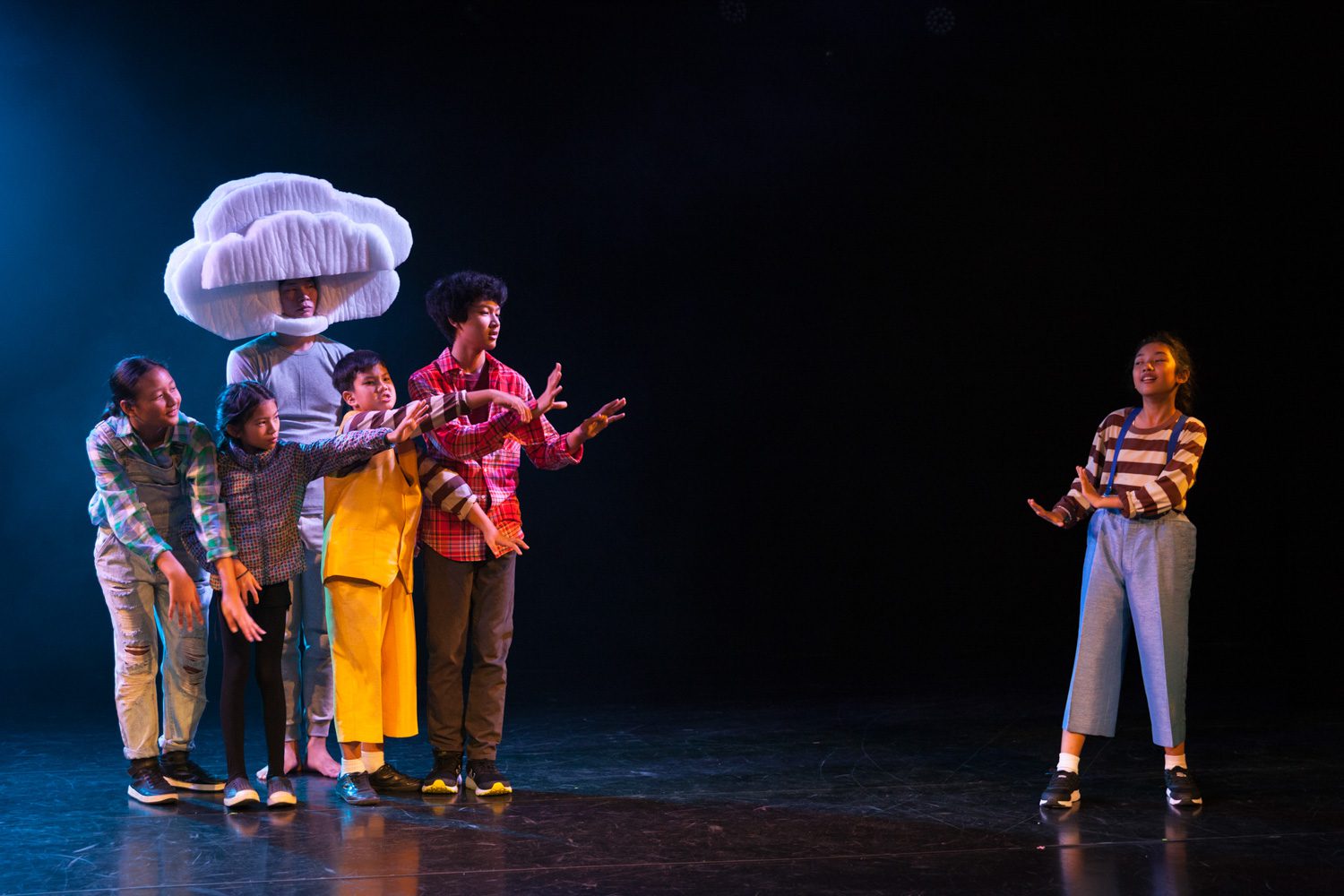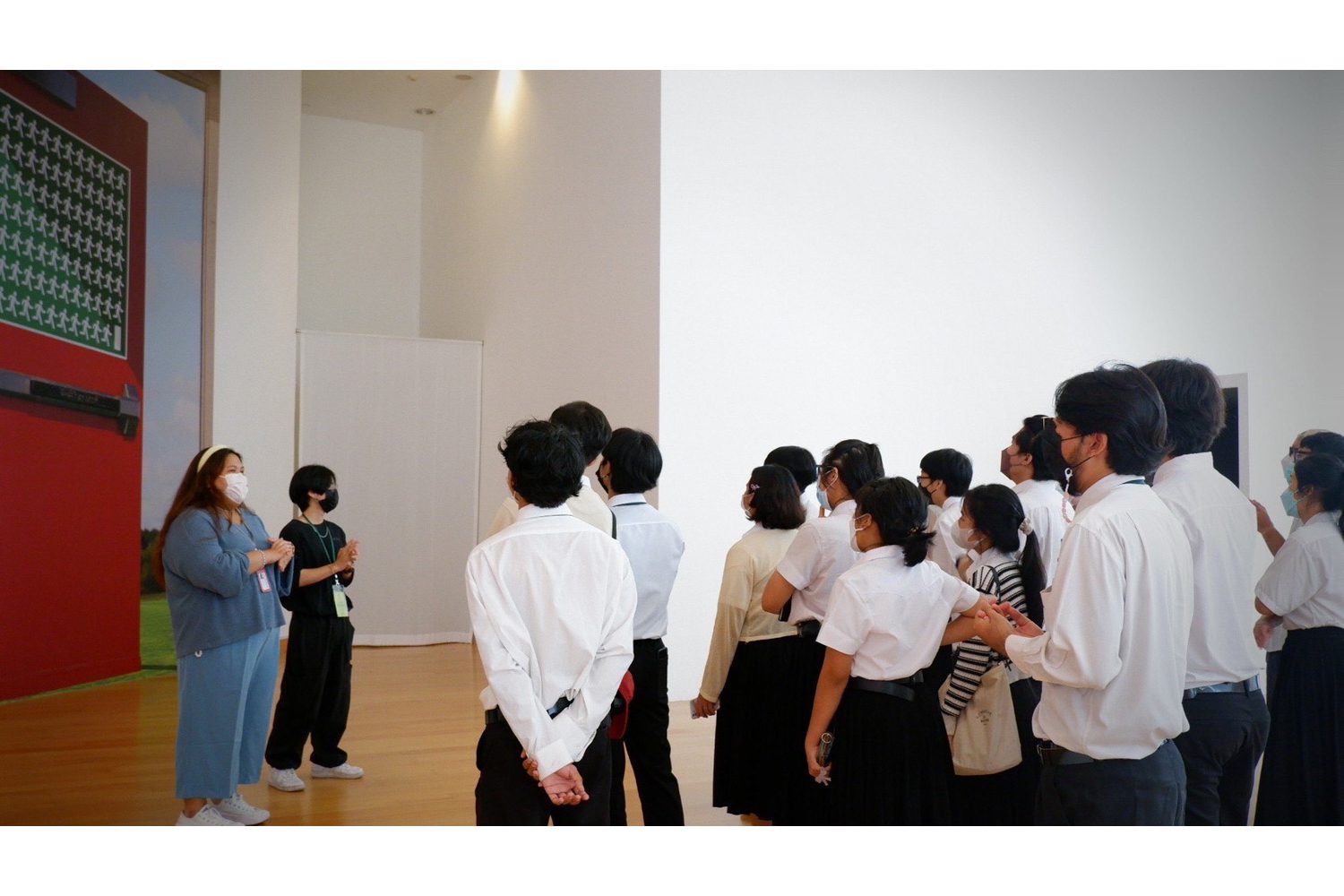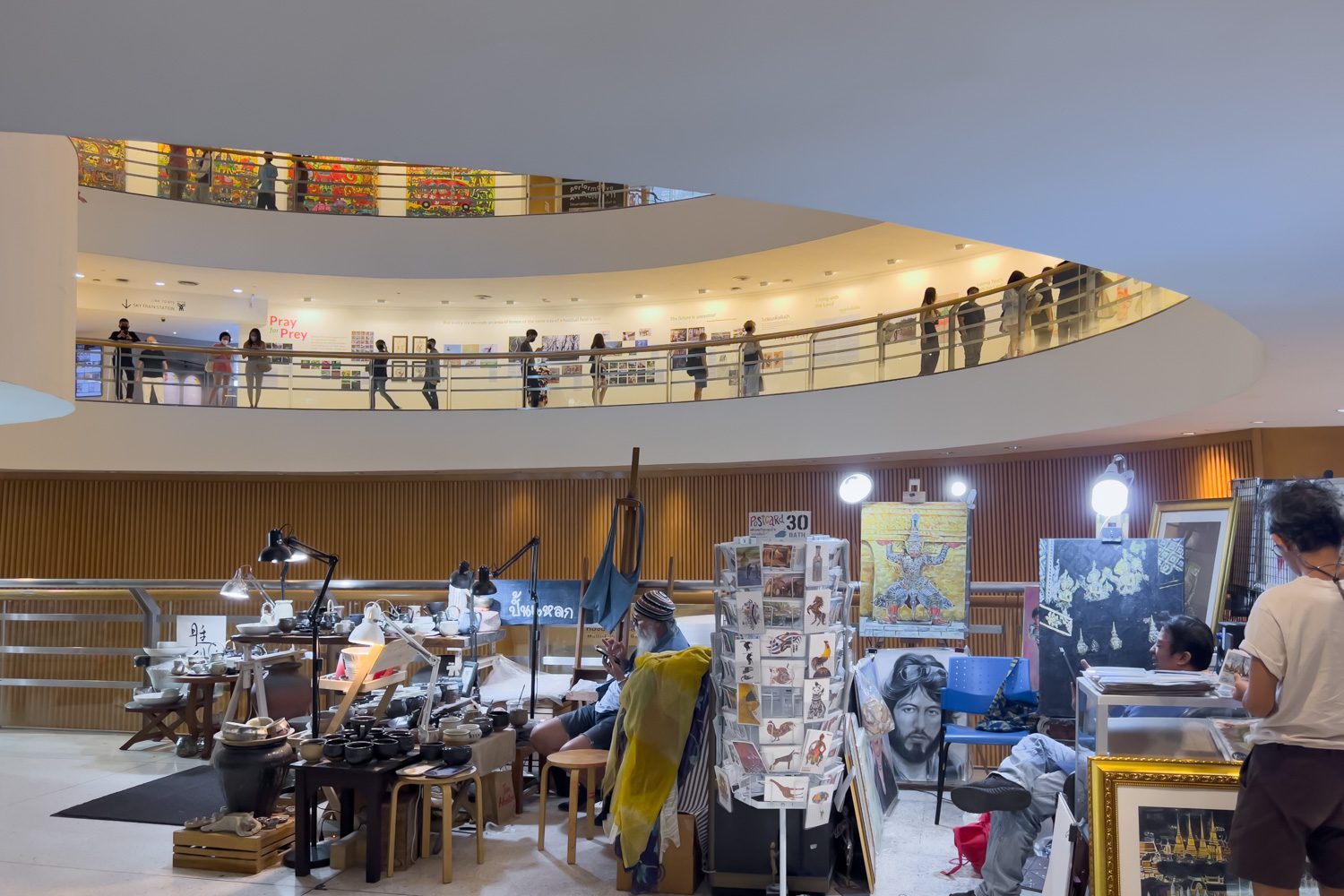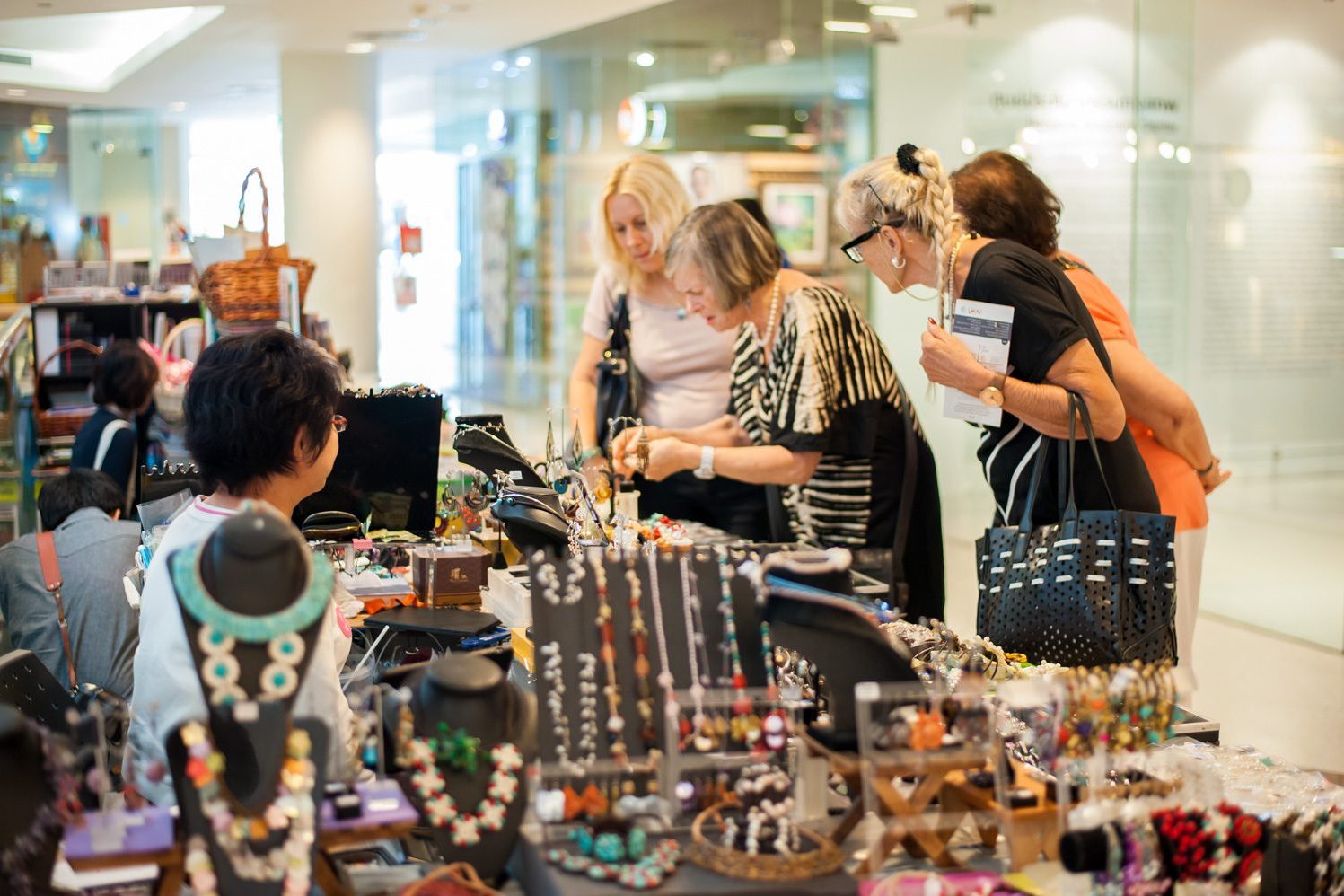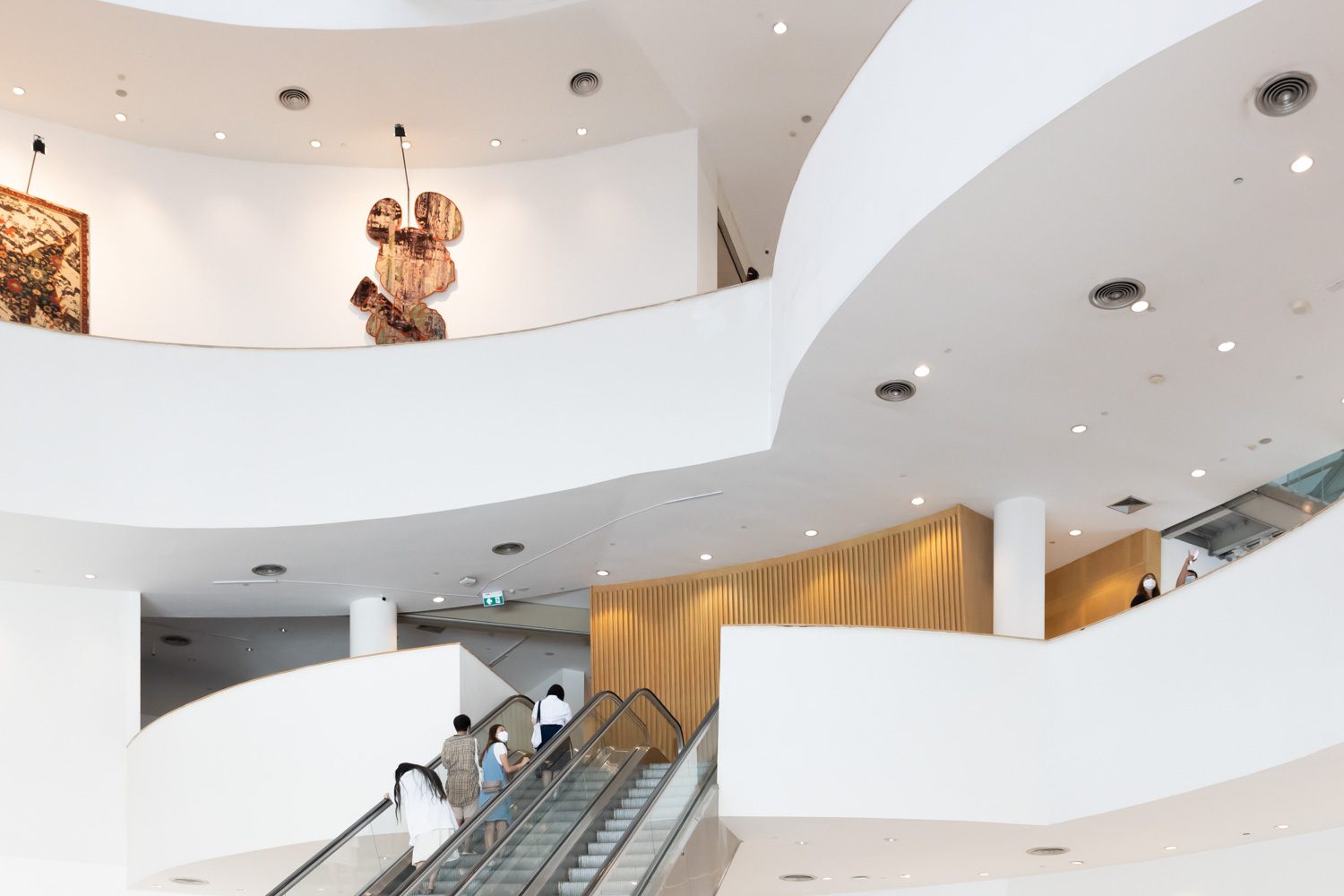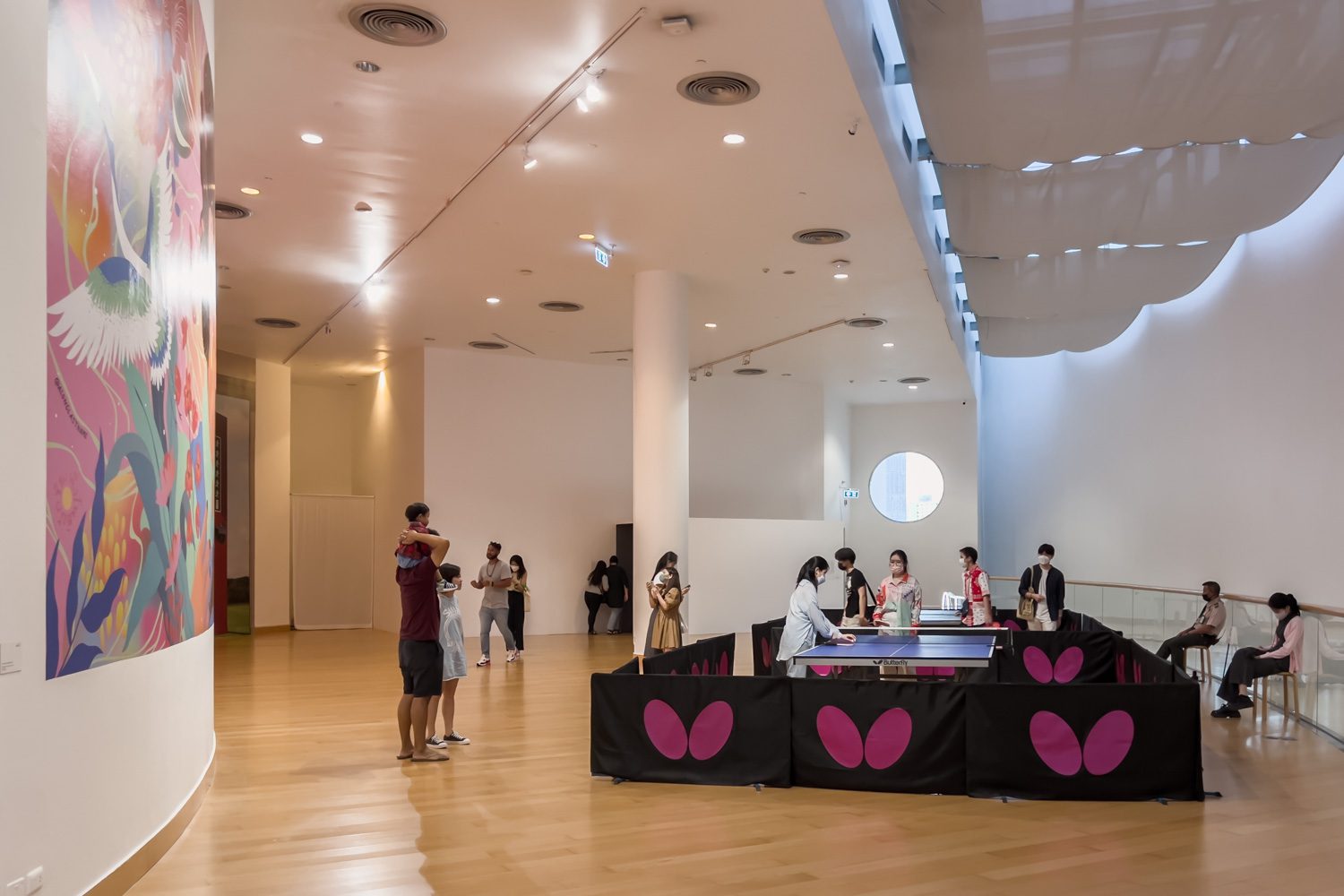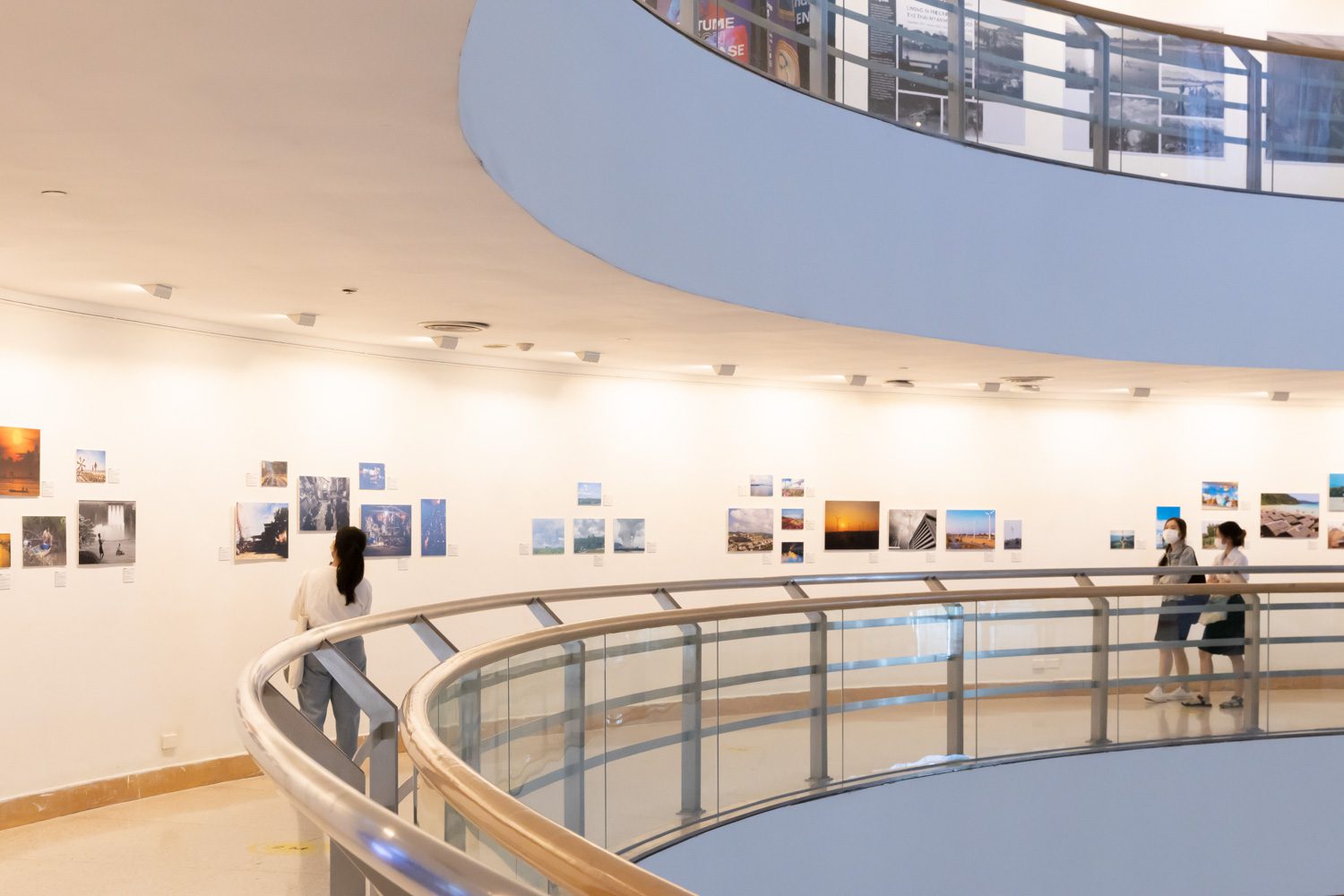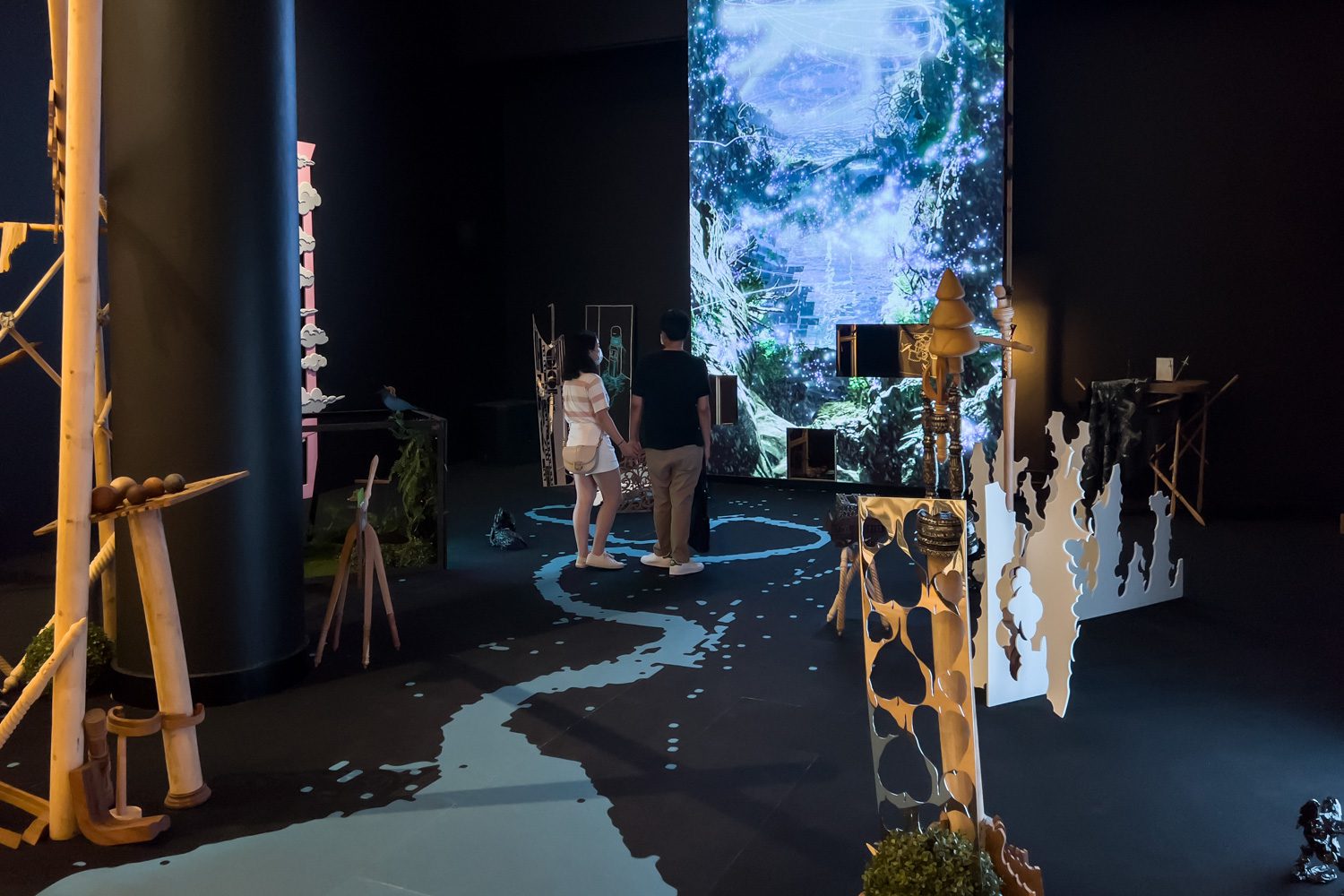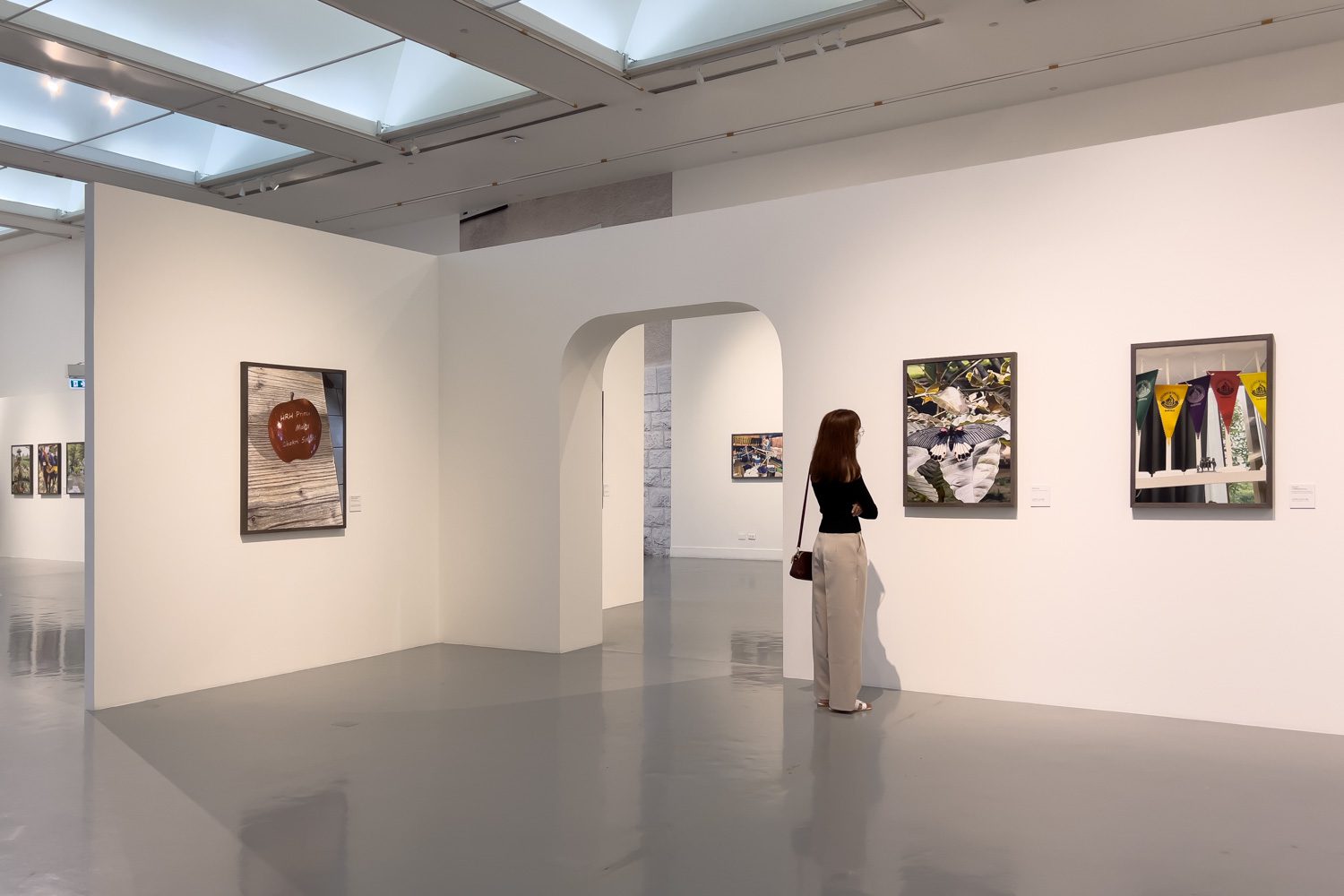WITH ART4D’S INVITATION, VICHAYA MUKDAMANEE, DEAN OF SILPAKORN UNIVERSITY’S FACULTY OF PAINTING, SCULPTURE, AND PRINTMAKING, SPEAKS THE NEW DIRECTOR OF BANGKOK ART AND CULTURE CENTRE (BACC), ABOUT THE BACC UPCOMING GOAL UNDER THE INFLUENCE OF THE NEW GENERATION, FUTURE OF CONTEMPORARY ART IN THAILAND, AND THE ROLE OF ART SPACE AS A PUBLIC AREAS OF MANY IDEOLOGIES.
INTERVIEW AND TEXT BY VICHAYA MUKDAMANEE
PHOTO: KETSIREE WONGWAN EXCEPT AS NOTED
(For Thai, press here)
With art4d’s invitation, Vichaya Mukdamanee, dean of Silpakorn University’s Faculty of Painting, Sculpture, and Printmaking, speaks with Adulaya “Kim” Hoontrakul, the new director of Bangkok Art and Culture Centre (BACC), on her role and responsibilities as the nation’s major art organization and institute. To call these two the new generation’s major players in Thailand’s art and cultural scene wouldn’t be an overstatement.
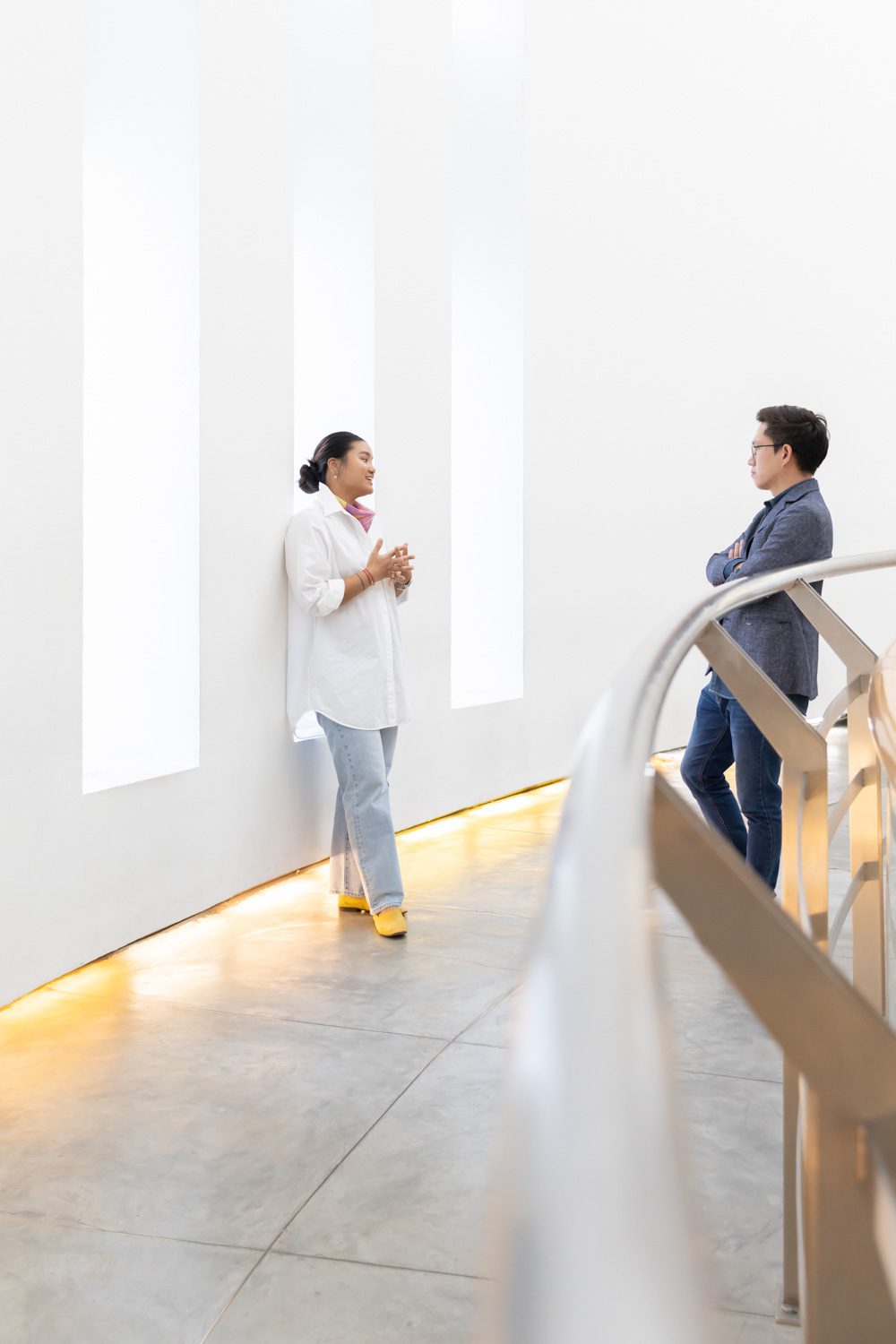
Vichaya Mukdamanee: First of all, congratulations on your new job as director of BACC. How has everything been with the new role and new position?
Adulaya Hoontrakul: I have to confess that being in this position happened far sooner than I had planned for my life. I’m also pursuing a PhD, but this is such an incredible opportunity that I’ll give it my best. The first thing that surprised me about is that I enjoy the managerial side of the job. I used to believe that because of my background in art history, I would be better on the research side of the spectrum. However, managing is a different type of challenge, so it’s been fun. There are hundreds of things to do. I’ve been attempting to plan for the center to become what I’ve envisioned, something fresh in the direction I’ve planned and hoped for, working together with the team members, who are already working very hard. Everyone is here out of love and passion. When there was a budgeting issue, nearly no one left, so I really want to move forward with this team.
VM: You worked with this team before as a curator, thinking back before taking on the position of the director, do you view or feel differently about BACC now?
AH: BACC was the first organization that gave me the opportunity to curate, so there was this feeling of appreciation. Manit Sriwanichpoom brought me in to assist Apinan Poshyananda in curating Vasan Sitthiket’s exhibition. That was my first job after graduating. I still have the same feeling about BACC, but on a larger scale, and my responsibility has changed.

Photo courtesy of BACC
VM: How do you see BACC’s identity?
AH: If it’s an issue of identification, what I want to do is persuade the art center to develop a clearer identity as a “center of art and cultures,” rather than changing society’s perception. Many people may use different terminology to explain or define BACC, such as museum or gallery, but to me, BACC is an art and cultural center, which is self-explanatory in that it will house a variety of things, both art and culture, which can include music and performances. Other activities, particularly educational activities, must also be included.
The diversity also applies to the services, both in terms of usable space and the personnel on our team who are specialists, as well as the publicly accessible technology and tools that connect to the international network we have built. There are other issues and concerns to take into account, such as working with embassies and international organizations that want to use the space. It’s a form of cultural exchange and one of BACC’s many other functions.
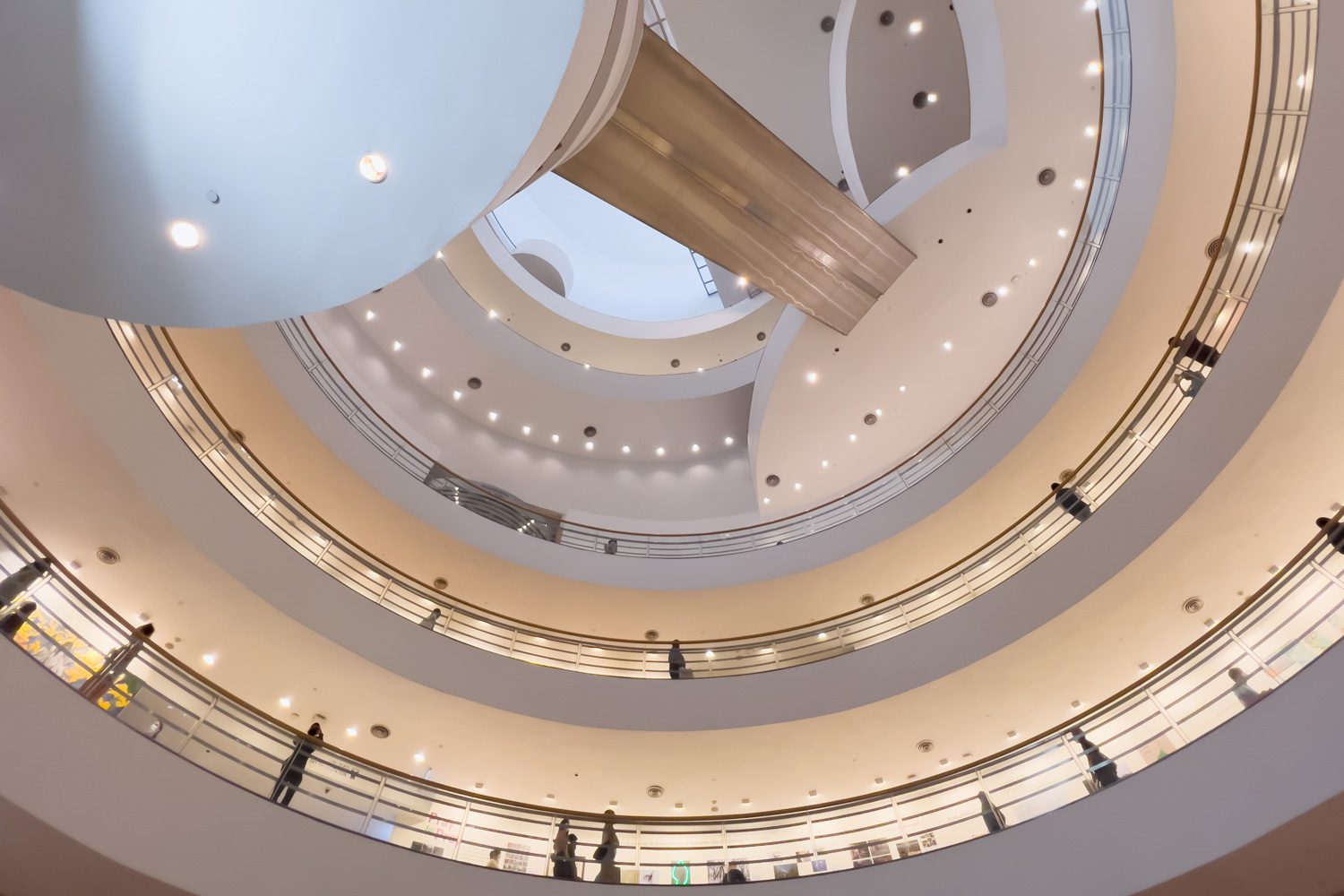
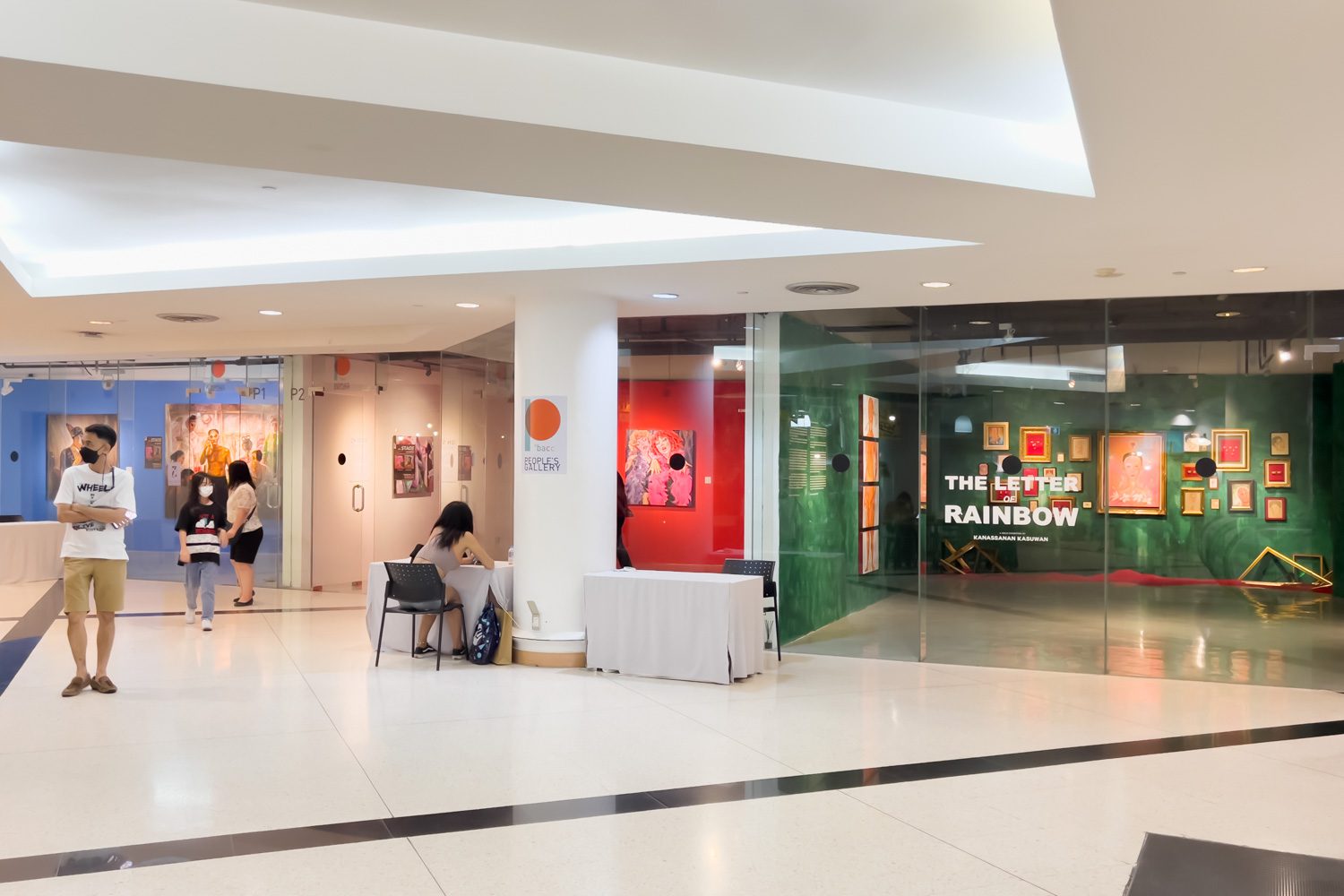
VM: In terms of management, what’s the most concerning aspect of BACC?
AH: I believe it all comes down to funding. But I don’t want to use the word “problem.” It is my primary task and priority, in my opinion. For example, we need retail areas on all four floors since they are a source of income that can help keep the center running and sustain itself. It also allows us to do more with the money, in addition to the budget we are now provided.
Although BACC holds fundraising events and has been promised more financial help, it is critical that we endeavor to build and keep strong relationships with those who have given us support, both governmental and private. This is something we need to work harder on, building our network for future funding so that BACC can develop and work on more diversified projects, such as exhibitions by international artists. We still don’t have the money to bring in big-name artists’ exhibitions. And it’s not only about money; it’s also about networking. The tax on imported artworks needs the government’s assistance and support. We would be able to broaden and diversify our activities if we were able to unlock certain issues and solve several of the problems.
Another thing I’ve been thinking a lot about is how we handle visitors’ first impressions. When you walk into other galleries, museums, or art centers, you’ll quickly recognize that it’s a museum or an art center. When visitors enter BACC, the first thing they notice are the shops. We do not have a ticket counter. Because the building and activities of the exhibition rooms are extremely visible to the public, many individuals are confused as to what kind of venue they are visiting. We aim to strive to improve first impressions by communicating to everyone what they may expect from the first thing they see. They need to understand right away that this is an art and culture center. It feels to me like I’m curating the entire building, similar to curating large-scale, site-specific art exhibit.

VM: What kind of content do you think will appeal to viewers and are interesting enough to bring people into BACC?
AH: I actually don’t want to use this word because everyone else is, but it does represent what I want to do. It’s diversity. That is not to suggest that BACC has not been diverse, but I believe my interest rests in the diversity that resonates with today’s viewers. I looked at the statistics and discovered that the majority of people that visit BACC to see exhibitions or access services provided by our education department are just 15–16 years old, and most of the visitors are under the age of 30. That is an extremely young audience. In other countries or galleries, the primary audience isn’t this young, and we regard it as a very special asset. So I’ve been very interested in developing different content that caters to this group of individuals. I’m curious about how this generation appreciates art and communicates so that we may create exhibitions that correlate to viewers’ interests. We may offer additional curatorial skills courses to the younger generation in order to develop them into curators who can fully comprehend and create something that meets the expectations of the younger generation.
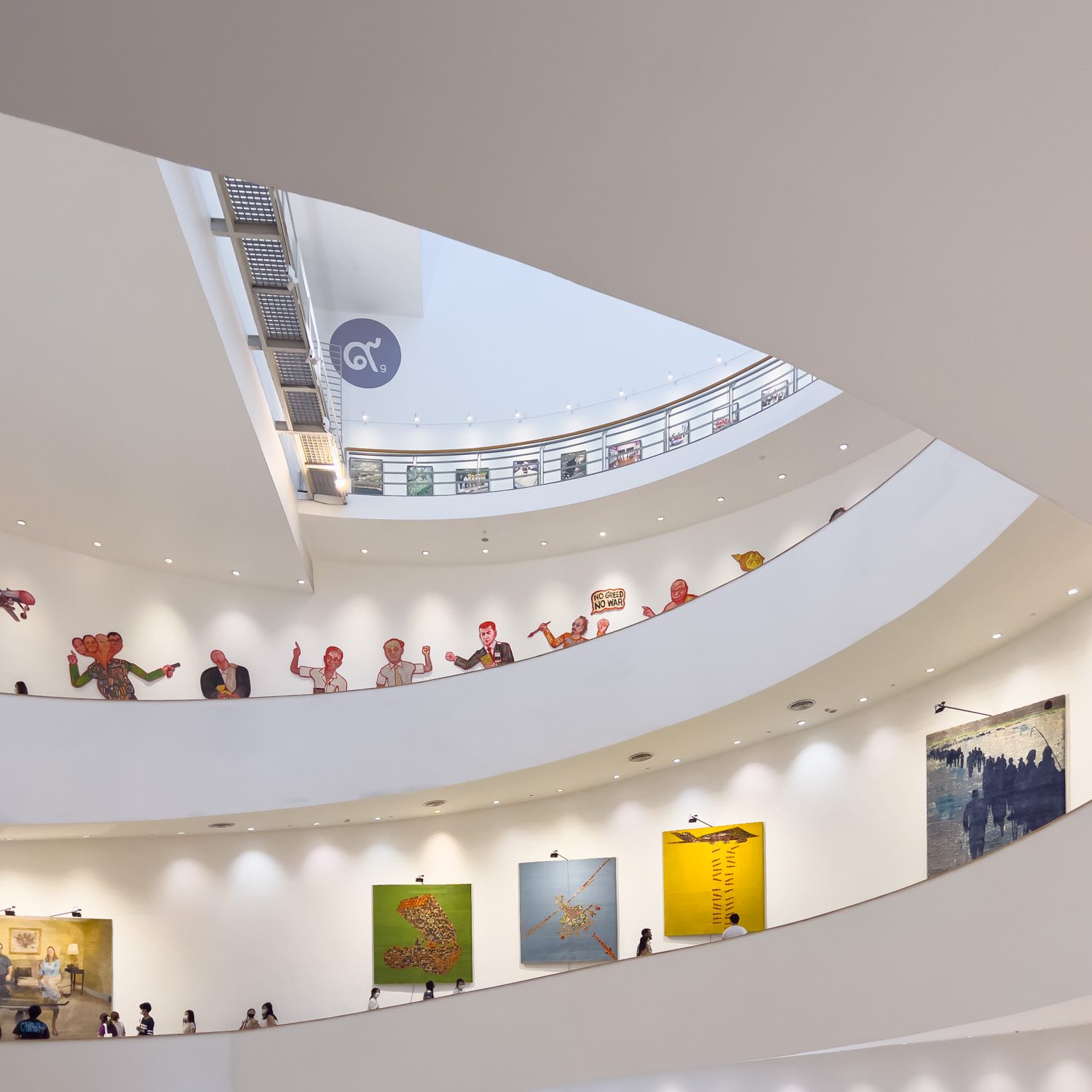
VM: Since the nature of contemporary art is open to criticism on issues that may not be considered mainstream in art, questioning things that most people overlook, how do you think you can find the balance between being a mainstream institution and the alternative nature of contemporary art as an art center that is expected to serve the public and the mass?
AH: The BACC building, I believe, contributes to BACC’s ability to accommodate such different artistic themes and exhibitions while maintaining a balance between mainstream and the alternative. The design makes each component of the building functional and large enough to fit the numerous contents into the different sections of the center. The main gallery spaces are on the 7th, 8th, and 9th floors, and they are overseen by the center’s own team. We also have other spaces that can accommodate something more mass, or be curated into informative spaces with information that is easy to access and understand, or feature works that are more straightforward and cater to the tastes of the general public, such as people who just want to be in an artistic environment without having to read textbooks, study in-depth information, or look up curatorial statements to understand art. There are other areas dedicated to educational activities, such as lecture and seminar halls and libraries. Each portion complements the others and has its own functional purpose. There are different advantages and disadvantages to the multi-functionality of the BACC building’s architectural design.
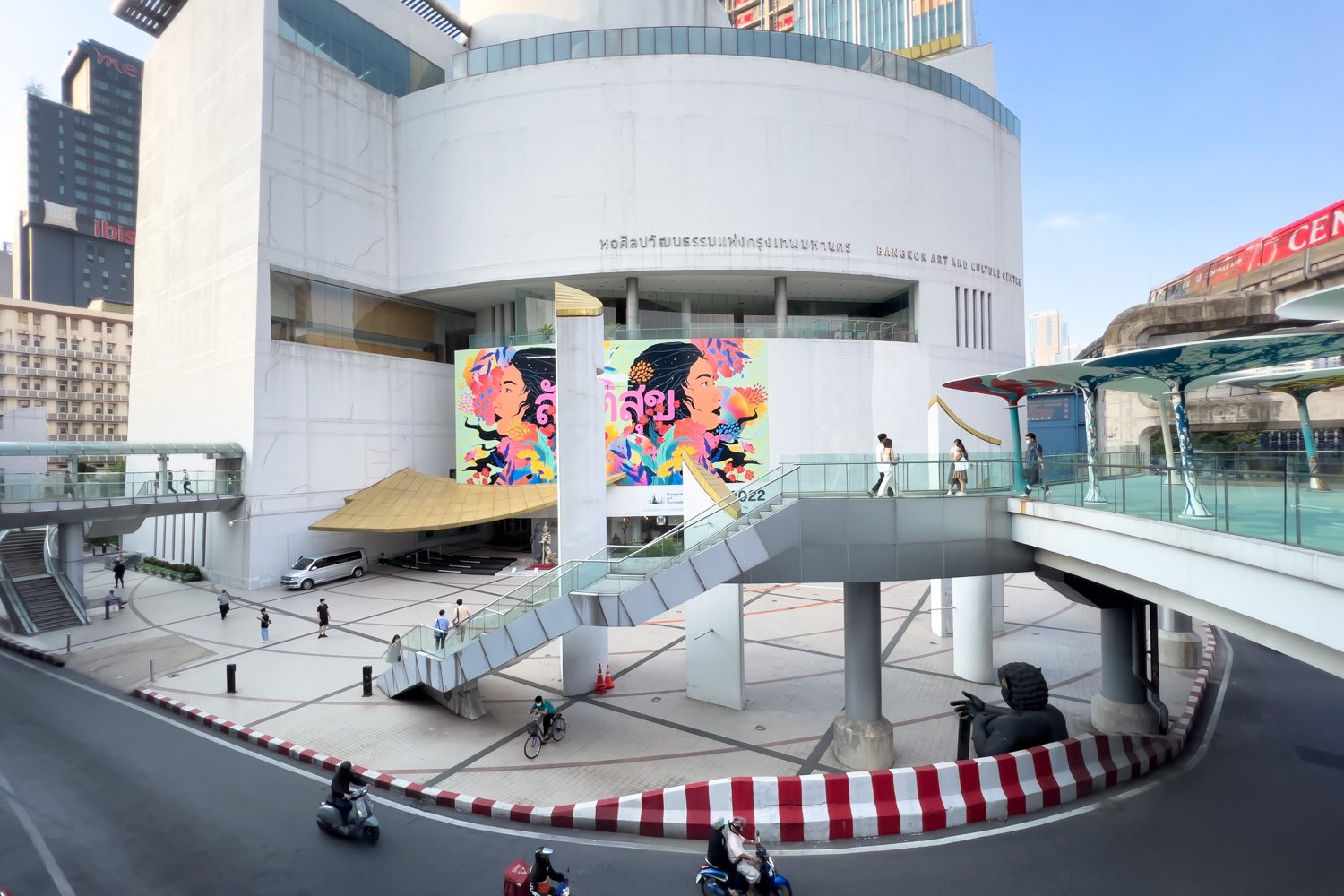
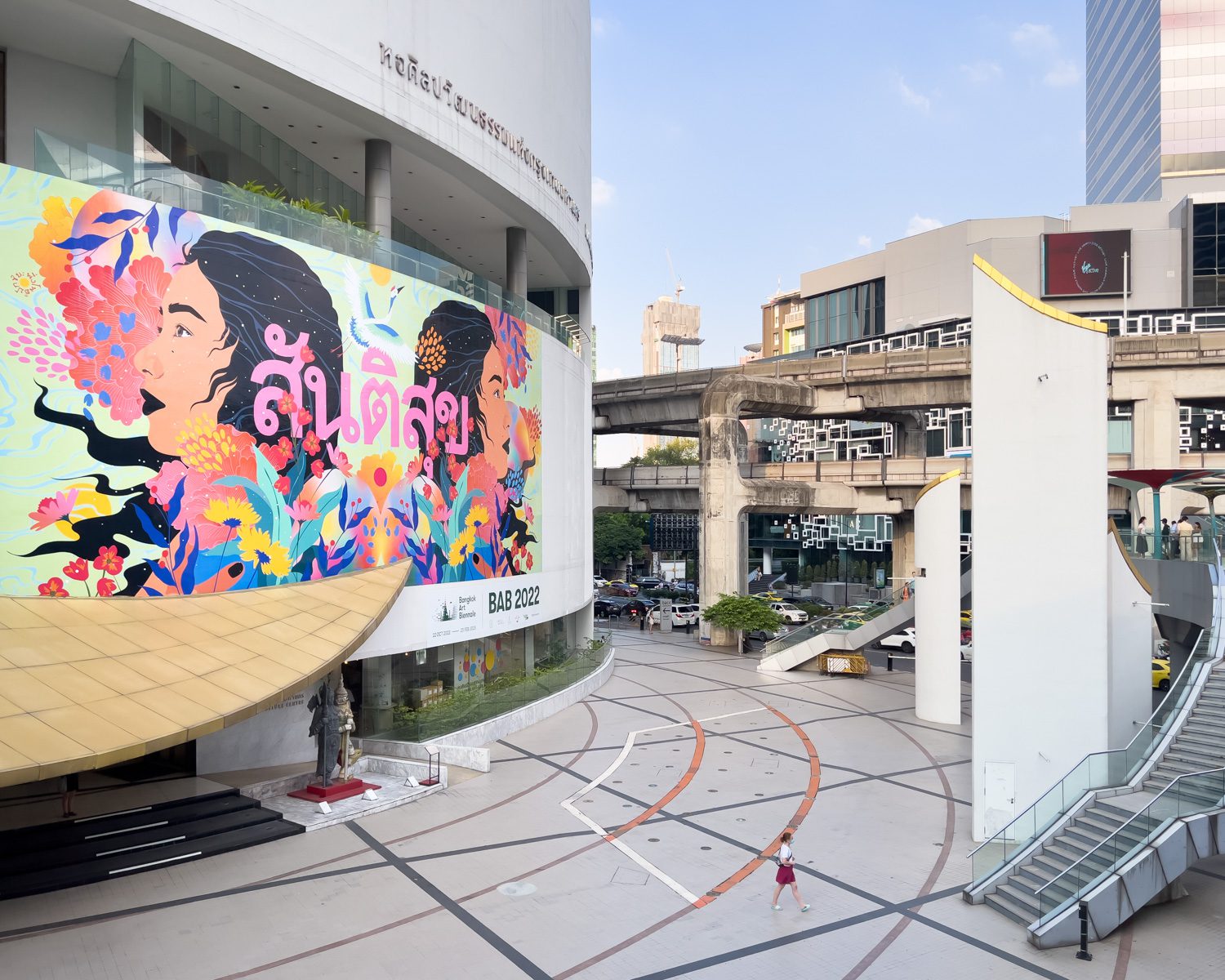
VM: The venue has been used as a protesting site for demonstrators of many ideologies. How do you see BACC’s status in relation to this issue, as a public space and how it has been used as a part of symbolic expression of political beliefs and so on?
AH: Before I take on this duty as director, we must reflect on what BACC’s role has been in the past. As a citizen of this country, BACC should never have to close its doors. When the neighborhood saw significant protests, BACC remained open for business as usual, and security personnel were stationed to ensure everyone’s safety. That type of situation may not have happened yet during my time as director, but if I were to imagine what we can do to prepare for a similar situation that may occur in the future, I believe I will take what BACC has done and what is reasonable and suitable as the direction that BACC will continue to follow under my direction.
In my opinion, a society should not be divided because it isn’t supposed to be divided. There is no country on the planet where everyone believes the same thing. It is critical for everyone to be able to think differently. And I emphasize the word “to be able to” since it is what drives us forward. I don’t think we can progress as a country if everyone believes the same thing.
I mean, I know a lot of people desire a space where everyone can express their thoughts, opinions, and individuality. It does not have to take the form of artistic expression. I believe BACC is pleased to be one of the places where people feel they can come in and look for something fresh and different, apart from what they see on the streets in their everyday lives, in their immediate environment, or in places like shopping malls that they frequent. BACC should be the type of place that promotes and fosters a variety and new experiences for the younger generation.
VM: The gap between contemporary art and the general public is still very wide. That’s still an undeniable fact. How do you plan on brining the public closer to contemporary art, and bridging that gap?
AH: Looking at how art is promoted in other countries and the endeavors to persuade people to be more interested in art by using billboards and signs to advertise projects and events that can be seen around a town or city, it’s the kind of thing that makes you think that art and aesthetics are essential parts of people’s lives. I believe that art scenes in other countries are quite organic, growing alongside economic and sociological transformations that occur at different times.
So, in my opinion, if we want Bangkok to have that kind of atmosphere, I think we’ve already missed the train. Or perhaps that type of communication isn’t the route we should take. I propose that everyone think about the present. What strategies can be used to spread information as far as possible and reach the greatest number of people? The Internet is the answer. But the next question is, how can we use it to achieve the best results? There are currently several state-initiated policies attempting to integrate art into the daily lives of Bangkok residents by utilizing the Internet as a medium. There have been projects such as Colorful Bangkok 2022, for which BACC serves as a part of the fundraising and working team. There’s this website called bangkokartcity.org that I think has a lot of potential and that I hope will grow into something more than just a project-based platform, but into one of Bangkok’s long-term projects. We have networks that can assist in developing these activities and better integrate them into people’s lives than ever before.
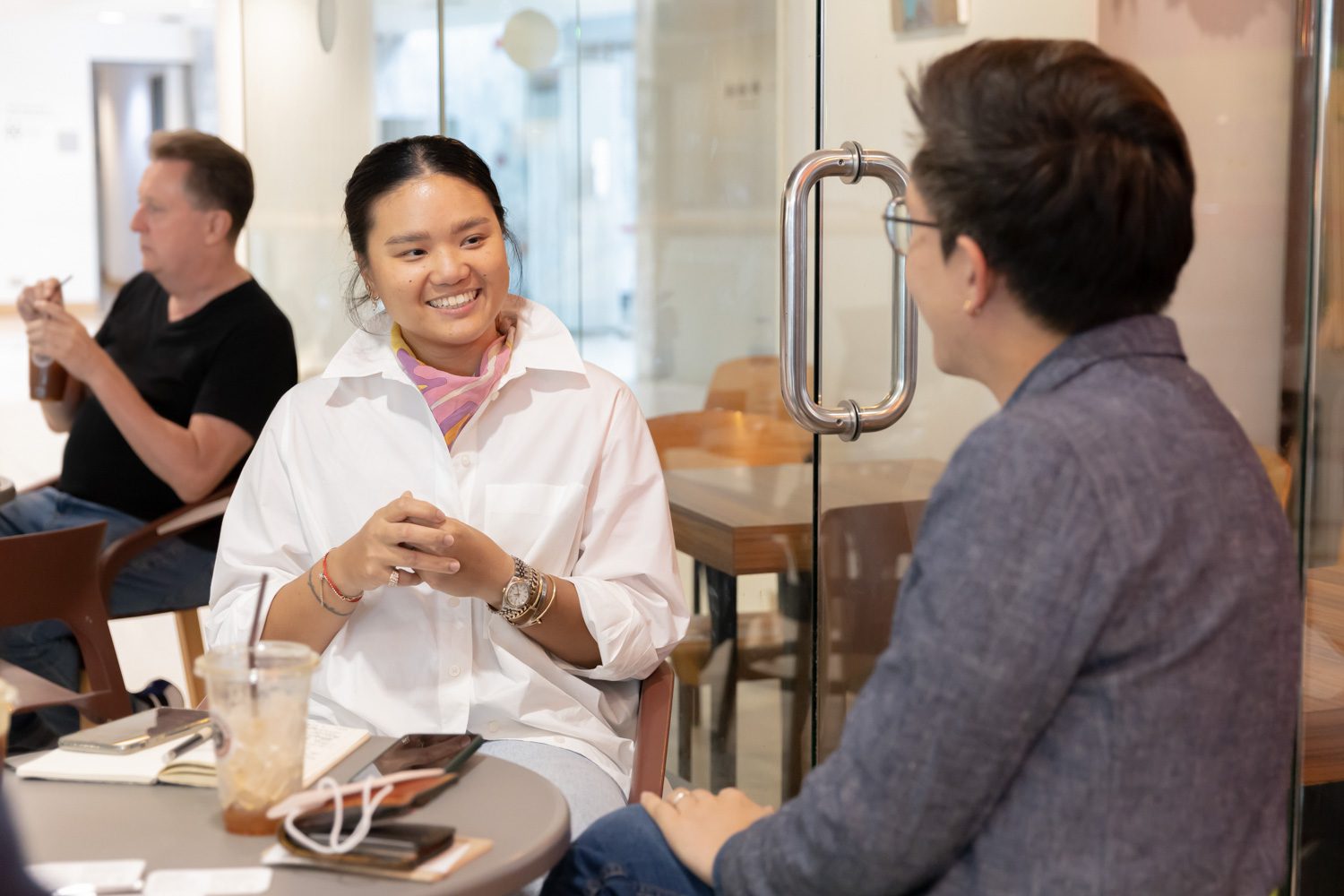
VM: As the director who has only recently started at BACC, what do you want to say to everyone?
AH: I’d like some time (smile). I understand that many people have high hopes for the recently appointed director and expect me to do x, y, and z, among other things. But I want to assure everyone that I intend to contribute everything I have, and I do hope everyone will give me some time. To actually be in this position, a lot of things aren’t that easy to get done. There are numerous stakeholders to consider, and everyone needs to work together.
Maybe change will come in someone else’s time, not mine. I believe it is important for me to think in this way. As the director, I don’t necessarily hope or desire to change everything during my term. There are things that can be changed and improved, but as I previously stated, it is a joint endeavor. My objective is to develop or bring in the proper soil—the right soil—for the people who will be the next directors to use in order to grow the right seeds. Everything must be capable of evolving. I’m building the center that arose from the efforts of many people who worked with all their might to bring BACC into being. There are people of many generations, as well as many different voices. I may not be the director who brings about a totally new change because many things already exist, but my objective is for everyone to be more collaborative and work together better.
VM: I appreciate your time today. I’ll be one of your supporters.


